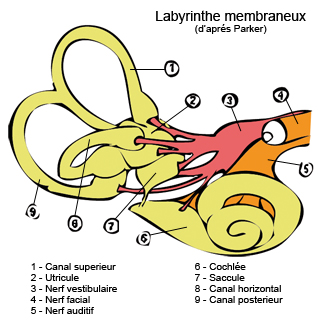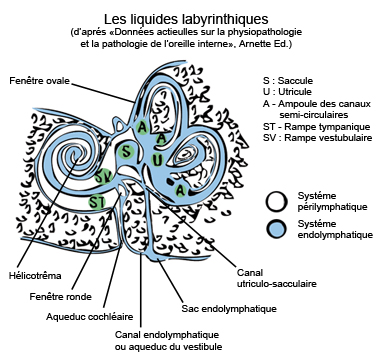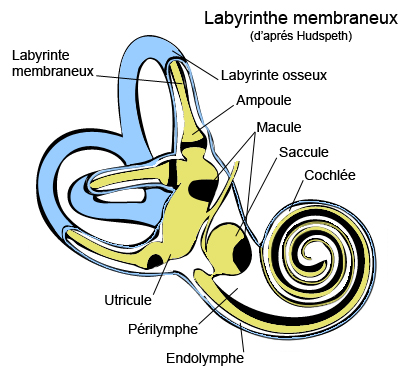The Inner Auditory Canal

It is via the inner auditory canal that the facial nerve, Wrisberg’s intermediate nerve, the auditory nerve and the vestibular nerves pass and the arteries supply blood to this region. Its base is located at the same level as the floor of the vestibule from which it is separated by an osseous wall.
Stretching from the ear drum on the outside and the inner auditory canal on the inside, the vestibule is the middle part of the posterior bony labyrinth to which the semi-circular canals are attached. The vestibule and the semi-circular canals comprise the balance organ or the vestibular apparatus.
The vestibule shelters two membranous elements: the saccule and the utricle, which contain, in a localised part of their wall, a sensory epithelium, the macula.

Lymphatic circulation of the labyrinth
The membranous labyrinth is separated from the bony labyrinth by a clear liquid, perilymph. It in turn contains a viscous liquid, endolymph.
Through a very narrow channel, called the cochlear aqueduct, the perilymphatic space connects with the subarachnoid space.
The saccule and the utricle are connected via the utriculosaccular duct to which the fine endloymphatic duct connects.
The latter, associated with an arteriole and a vein, is the vestibular aqueduct and connects the vestibule to the endocranium.
It terminates at the posterior superior face of the temporal bone, under the dura-mater, forming a flattened vesicle: the endolymphatic sack.






